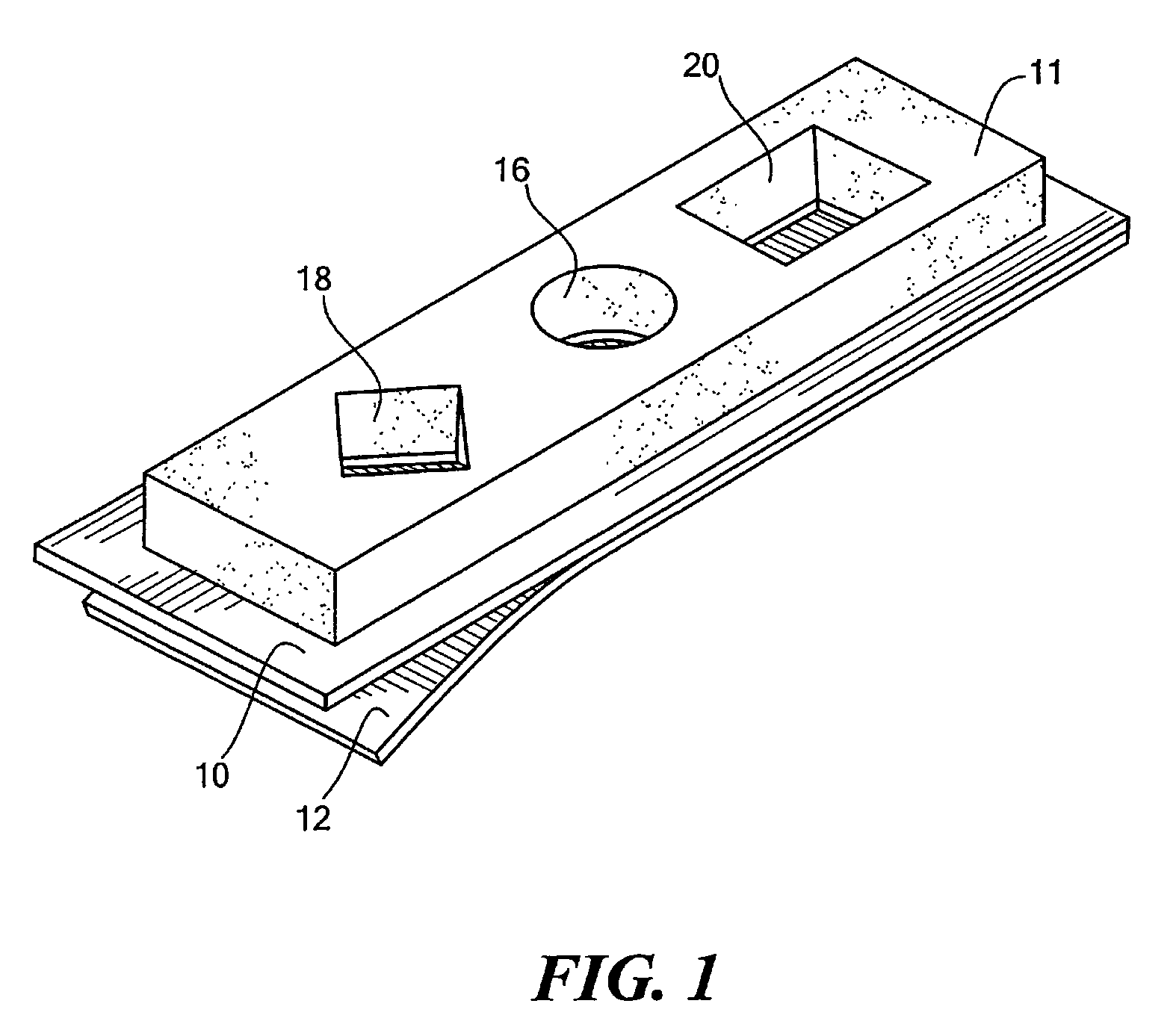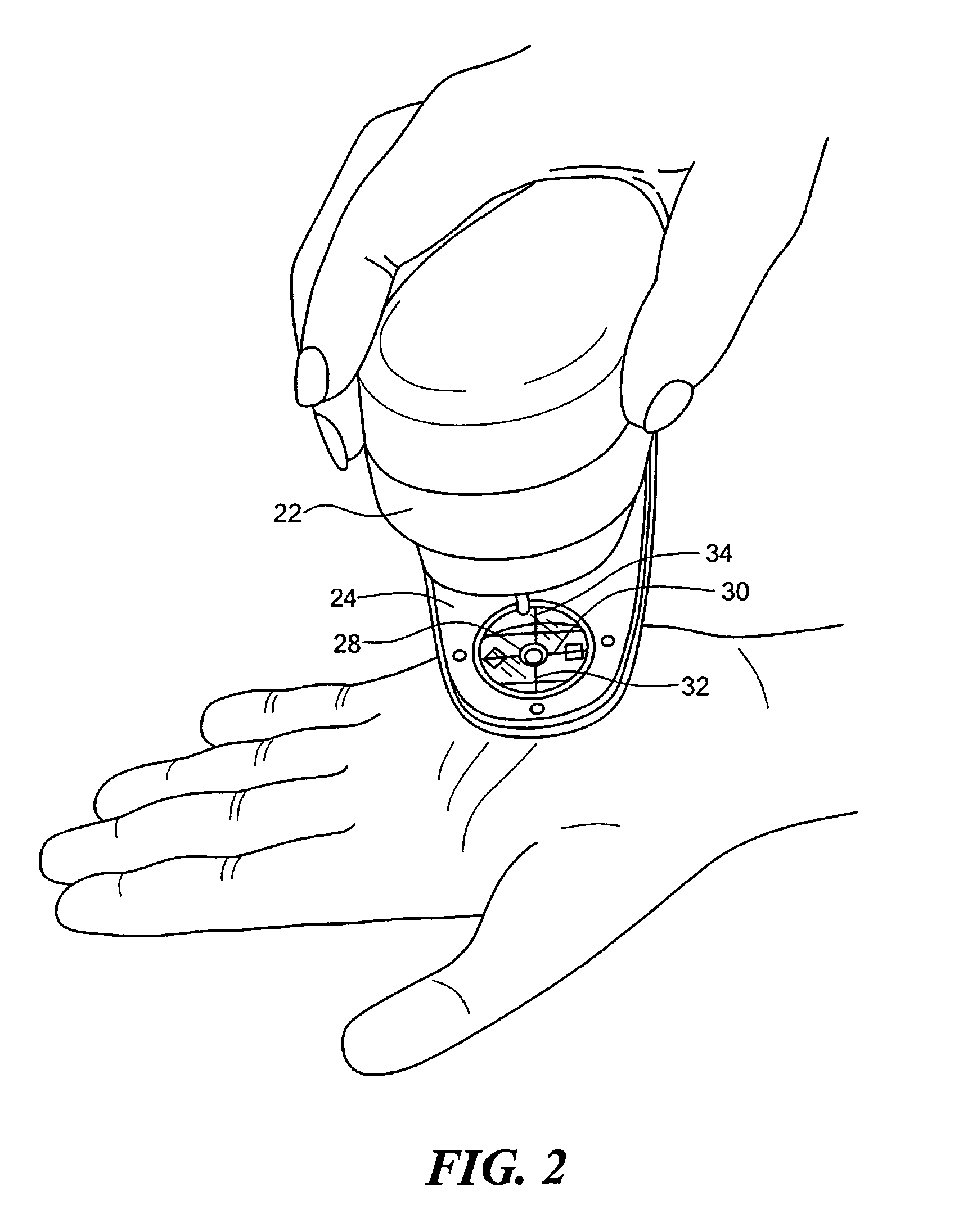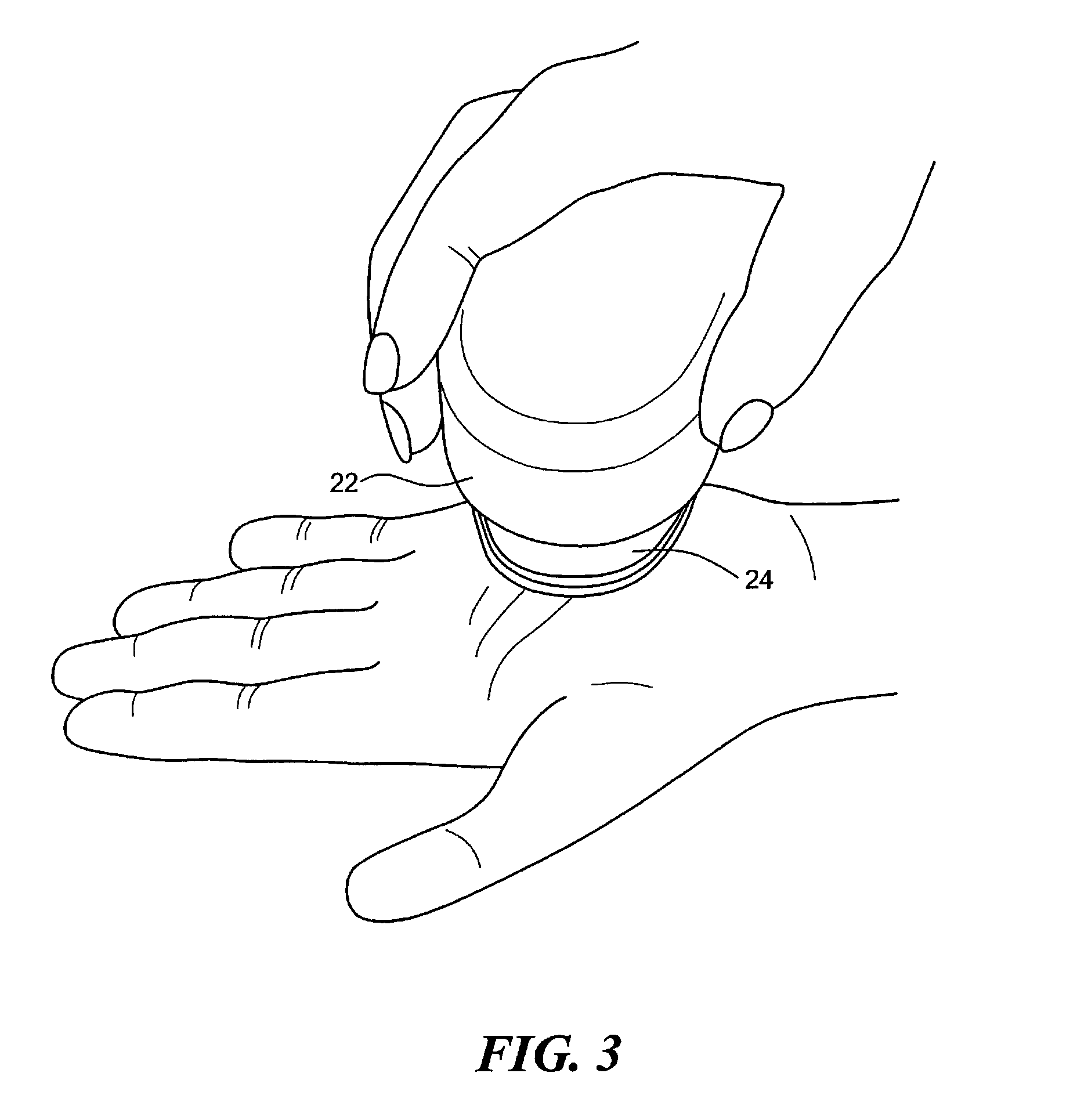Determining cholesterol directly on skin surface
a test technology, applied in the field of color-based biochemical and immunological assays and tests, can solve the problems of false negatives, essentially non-quantitative, and long and tedious tests, and achieve the effect of improving the sensitivity of tests or assays, and enhancing sensitivity and specificity
- Summary
- Abstract
- Description
- Claims
- Application Information
AI Technical Summary
Benefits of technology
Problems solved by technology
Method used
Image
Examples
Embodiment Construction
[0049]As evident from the foregoing discussion, applicant's basic invention of using colorimetric measurements, particularly of chroma and / or hue angle for measurement of the results of color-based assays and tests finds application in a number of aspects and embodiments. Two aspects of the invention and the preferred embodiments thereof will therefore be described further below, separately under individual headings.
[0050]Suitable spectrophotometrics for use in all aspects of the present invention are portable, reflectance-based, and give accurate measurements of color characteristics such as hue angles, lightness and chroma or saturation, when the incident light of the spectrophotometer is reflected back from the stained sample to the instrument's receiver. They are commercially available. A specific example of a suitable such instrument is that marketed by X-Rite, Grand Falls, Mich., U.S.A. as “Model CA22 Spectrophotometer”. It is supplied with appropriate software so that it can ...
PUM
| Property | Measurement | Unit |
|---|---|---|
| time | aaaaa | aaaaa |
| wavelength | aaaaa | aaaaa |
| wavelength | aaaaa | aaaaa |
Abstract
Description
Claims
Application Information
 Login to View More
Login to View More - R&D
- Intellectual Property
- Life Sciences
- Materials
- Tech Scout
- Unparalleled Data Quality
- Higher Quality Content
- 60% Fewer Hallucinations
Browse by: Latest US Patents, China's latest patents, Technical Efficacy Thesaurus, Application Domain, Technology Topic, Popular Technical Reports.
© 2025 PatSnap. All rights reserved.Legal|Privacy policy|Modern Slavery Act Transparency Statement|Sitemap|About US| Contact US: help@patsnap.com



